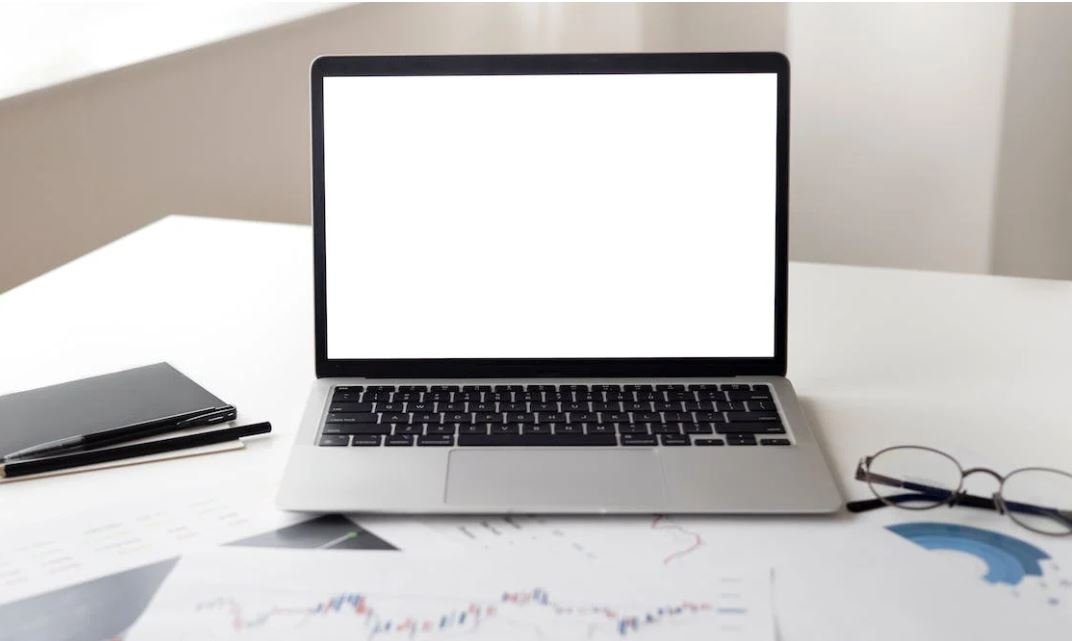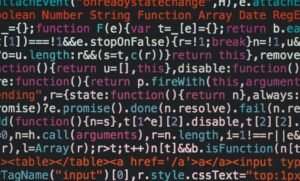Best Generative Art AI Tools
Generative art, a form of art created with the help of artificial intelligence (AI) algorithms, is gaining popularity among artists and designers. These AI tools enable users to generate unique and innovative artworks by harnessing the power of machine learning. In this article, we will explore some of the best generative art AI tools available today.
Key Takeaways
- Generative art AI tools are revolutionizing the way artists create unique artworks.
- These tools utilize AI algorithms to generate innovative and personalized art pieces.
- Artists can explore various styles and aesthetics by leveraging the versatility of AI-powered generative art tools.
- Generative art AI tools provide a platform for experimentation and creative exploration.
- These tools can inspire artists by providing fresh ideas and perspectives.
One of the top generative art AI tools is DeepArt.io, which utilizes deep neural networks to generate stunning artworks. It offers a wide array of styles and allows users to upload their own images, transforming them into unique artistic creations. The AI-powered algorithm analyzes the image and applies the chosen artistic style to create a one-of-a-kind piece. DeepArt.io encourages artists to experiment with different styles and unleash their creativity.
Another notable AI tool in the generative art space is Runway ML. This platform uses machine learning models to generate and manipulate images, sounds, and videos. Artists can create interactive installations, generate abstract visuals, and experiment with various AI models to enhance their artistic work. Runway ML provides a user-friendly interface, making it accessible to artists of all skill levels.
Generative art AI tools offer a unique way for artists to collaborate with algorithms and create visually stunning artworks.
Exploring Different Styles with AI
AI-powered generative art tools enable artists to explore an extensive range of styles, from abstract and surreal to realistic and impressionistic. These tools can generate art pieces inspired by renowned artists, historical movements, or even traditional art styles from different cultures. Artists can experiment with various aesthetics, allowing them to expand their creative horizons and discover new approaches to their work.
| Generative Art AI Tool | Main Features |
|---|---|
| DeepArt.io |
|
| Runway ML |
|
AI-powered generative art tools open up a world of possibilities for artists to explore and experiment with different artistic styles.
Unleashing Creativity through Experimentation
Generative art AI tools provide a platform for artists to experiment and play with their creative ideas. These tools offer features such as randomness, iterative generation, and interactive manipulation, allowing artists to discover unique combinations and unexpected outcomes in their artworks. By embracing the element of unpredictability, artists can push the boundaries of their creativity and produce art pieces that are truly groundbreaking.
Artists can also utilize Neural Doodle, an AI tool that enables the fusion of different styles in a single piece. This tool uses deep learning algorithms to generate intricate textures and blend them together, resulting in visually captivating artwork. Neural Doodle allows artists to create mesmerizing combinations, merging styles from different eras or genres into a unified artistic expression.
Generative art AI tools empower artists to unlock their creative potential and venture into unexplored territories of artistic expression.
The Advantages of AI-Powered Generative Art Tools
The advantages of using AI-powered generative art tools are numerous. Besides providing endless inspiration and new possibilities for artistic creation, these tools can also serve as valuable educational resources. They allow artists to learn about different art styles, explore the history of art movements, and gain insights into the techniques used by renowned artists.
| Advantages of Generative Art AI Tools |
|---|
|
Generative art AI tools offer artists a multitude of advantages, from artistic inspiration and education to fostering collaboration between different disciplines.
In the fast-evolving world of generative art AI tools, artists can access an ever-expanding toolkit to create mesmerizing and innovative artworks. By pushing the boundaries of creativity, exploring various styles, and experimenting with AI algorithms, artists can embark on exciting artistic journeys that redefine the landscape of art.

Common Misconceptions
AI Tools for Generative Art
There are several common misconceptions surrounding the use of AI tools for generative art. These misconceptions often arise from a lack of understanding or misinformation about the capabilities and limitations of these tools. It is important to clarify these misconceptions in order to have a more accurate understanding of the potential of AI in generative art.
- AI tools can create art on their own without human input.
- AI tools for generative art lack creativity and produce repetitive designs.
- AI tools will replace human artists in the future.
Contrary to what some may believe, AI tools cannot create art on their own without human input. While AI algorithms can generate patterns and designs based on existing data, they still require human intervention to guide and refine the output. The role of the artist is crucial in providing the necessary input and direction to create meaningful and aesthetically pleasing generative art.
- AI algorithms can assist artists in the creative process.
- AI tools offer new possibilities and combinations for artistic exploration.
- AI can be used as a tool for inspiration and as a starting point for artistic experimentation.
Another misconception is that AI tools lack creativity and can only produce repetitive designs. While it is true that AI tools rely on existing data and patterns, they can also generate novel and unique compositions. AI algorithms have the ability to analyze and learn from a vast amount of artistic styles and techniques, enabling them to produce varied and innovative generative art.
- AI tools are a complement to human artists, not a replacement.
- AI can enhance and expand the creative process for artists.
- AI tools can work collaboratively with artists to push the boundaries of generative art.
Lastly, the idea that AI tools will replace human artists in the future is unfounded. AI is a tool that can augment and enhance the creativity of human artists, but it cannot replicate the unique vision, emotions, and intuition that human artists bring to their work. The real potential of AI in generative art lies in its ability to work collaboratively with artists, expanding the possibilities and pushing the boundaries of artistic expression.

Introduction
Generative art is a fascinating field where algorithms and AI play a significant role in creating unique and visually captivating art pieces. In this article, we explore ten of the best generative art AI tools available. Each table showcases the name of the tool, its features, and a brief description, allowing you to delve into the diversity and creativity that the AI tools offer within generative art.
1. Artbreeder
Artbreeder takes inspiration from genetic algorithms, merging artworks to create new and extraordinary pieces. Users can evolve images by blending, mutating, and crossing different artworks. This AI tool offers an extensive collection of artwork styles and genres, allowing for unlimited exploration of art possibilities.
2. DeepArt.io
DeepArt.io uses deep neural networks to transform photos into stunning works of art, inspired by famous artists and their unique styles. Users can apply predefined filters or create custom styles, enabling them to create personalized artworks in various genres, including Impressionism, Cubism, and Pop Art.
3. RunwayML
RunwayML is a platform that provides access to a wide array of AI models and tools for creative purposes. Artists can explore different AI algorithms, such as image synthesis, text-to-image, and style transfer, to generate diverse and inventive artworks.
4. DALL-E
DALL-E is an AI model capable of generating images from textual descriptions. With DALL-E, artists can push the boundaries of imagination by describing abstract concepts and seeing them visually represented. This tool is great for generating surreal and captivating artwork.
5. Google DeepDream
Google DeepDream utilizes deep neural networks to enhance images in a dream-like manner. Inspired by the human visual system, this AI tool creates mesmerizing hallucinatory visuals by amplifying and transforming patterns found in the input image.
6. GANPaint Studio
GANPaint Studio allows users to edit images by manipulating their semantic attributes. Artists can remove specific objects, change colors, or add new elements to an existing image seamlessly. This AI tool offers an intuitive interface for easy and creative editing.
7. Artomatix
Artomatix enables the automatic generation of virtual textures and materials using AI. This tool saves artists time by creating high-quality textures with realistic details and variations. It offers a vast library of textures and materials suited for games, movies, and virtual reality applications.
8. Prisma
Prisma lets users transform their photos into stunning artworks using AI-powered filters. With Prisma, artists can experiment with various styles, ranging from classical paintings to modern abstract compositions, giving their photos a distinctive artistic touch.
9. Deep Dream Generator
Deep Dream Generator applies the power of deep learning to turn ordinary photos into extraordinary pieces of art. Artists can explore the AI’s surrealistic capabilities and generate uniquely appealing images using neural networks and customization options.
10. PaintsChainer
PaintsChainer uses AI algorithms to provide automatic colorization of line art. Artists can quickly and effortlessly bring their black and white sketches to life by adding vibrant and realistic colors. This tool allows for quick experimentation and enables artists to focus on the core aspects of their work.
Conclusion
The world of generative art AI tools is vast and continuously evolving. The ten tools explored in this article represent a small fraction of the innovative ways that artificial intelligence can contribute to artistic expression. From blending and transforming artworks to automatic colorization and texture generation, these tools offer a wealth of possibilities for artists seeking to explore new creative horizons. As AI continues to advance, it is undoubtedly an exciting time for generative art, where human creativity collaborates with the power of algorithms to push the boundaries of artistic creation.
Frequently Asked Questions
Generative Art AI Tools
What is generative art?
Why is generative art popular?
Which are the best generative art AI tools?
Can generative art AI tools be used by non-technical users?
Are generative art AI tools only for visual art?
Can generative art AI tools replace human artists?
Do generative art AI tools require a powerful computer?
Can generative art be sold or used commercially?
Can generative art AI tools be used as a teaching tool?
What are the limitations of generative art AI tools?




